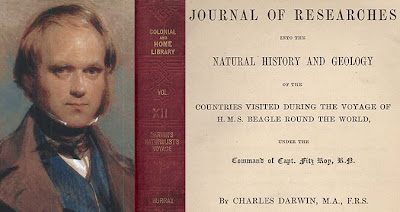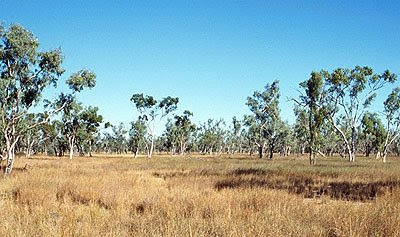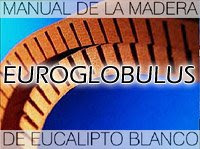The Voyage of the Beagle: Wanderings of Charles Darwin in Australia
Or... Happy Darwin Year... from Eucalyptus country!

January 12th-15th, 1836
"Early in the morning a light air carried us towards the entrance of Port Jackson (...) At last we anchored within Sydney Cove (...) My first feeling was to congratulate myself that I was born an Englishman"

"I hired a man and two horses to take me to Bathurst, a village about one hundred and twenty miles in the interior, and the centre of a great pastoral district (...) Everywhere we have an open woodland"

"The trees nearly all belong to one family, and mostly have their leaves placed in a vertical, instead of as in Europe, in a nearly horizontal position: the foliage is scanty, and of a peculiar pale green tint, without any gloss. Hence the woods appear light and shadowless: this, although a loss of comfort to the traveller under the scorching rays of summer, is of importance to the farmer, as it allows grass to grow where it otherwise would not (...)"
" The greater number of the trees, with the exception of some of the Blue-gums, do not attain a large size; but they grow tall and tolerably straight, and stand well apart. The bark of some of the Eucalypti falls annually, or hangs dead in long shreds which swing about with the wind (...) I cannot imagine a more complete contrast, in every respect, than between the forests of Valdivia or Chiloe, and the woods of Australia"
January 17-19th, 1836
"Early in the morning we passed the Nepean in a ferry-boat (...) Having crossed a low piece of land on the opposite side, we reached the slope of the Blue Mountains"

"On the summit an almost level plain extends, which, rising imperceptibly to the westward, at last attains a height of more than 3000 feet (...) the view of the extensive woodland to the east was striking, and the surrounding trees grew bold and lofty (...) each side of the road is bordered by scrubby trees of the never-failing Eucalyptus family (...) Mr. Archer, the joint superintendent, had the kindness to take me out kangaroo-hunting (...) The woodland is generally so open that a person on horseback can gallop through it. It is traversed by a few flat-bottomed valleys, which are green and free from trees: in such spots the scenery was pretty like that of a park"
January 30th - February 6th, 1836
"The Beagle sailed for Hobart Town in Van Diemen's Land. On the 5th of February, after a six days' passage, of which the first part was fine, and the latter very cold and squally, we entered the mouth of Storm Bay: the weather justified this awful name. (...) The climate here is damper than in New South Wales, and hence the land is more fertile"

"I ascended Mount Wellington; I took with me a guide, for I failed in a first attempt, from the thickness of the wood. Our guide (...) conducted us to the southern and damp side of the mountain, where the vegetation was very luxuriant; and where the labour of the ascent, from the number of rotten trunks, was almost as great as on a mountain in Tierra del Fuego or in Chiloe. It cost us five and a half hours of hard climbing before we reached the summit."

Mount Wellington's Peppermint - Eucalyptus coccifera, the Tasmanian Snow Gum. Plate photography courtesy Mark Hanna. Plate botanical commentary courtesy Dean Nicolle. (Click image to enlarge)
"In many parts the Eucalypti grew to a great size, and composed a noble forest. In some of the dampest ravines, tree ferns flourished in an extraordinary manner; I saw one which must have been at least twenty feet high to the base of the fronds, and was in girth exactly six feet. The fronds forming the most elegant parasols, produced a gloomy shade, like that of the first hour of the night.

"The summit of the mountain is broad and flat, and is composed of huge angular masses of naked greenstone. Its elevation is 3100 feet above the level of the sea. The day was splendidly clear, and we enjoyed a most extensive view; to the north, the country appeared a mass of wooded mountains, of about the same height with that on which we were standing, and with an equally tame outline: to the south the broken land and water, forming many intricate bays, was mapped with clearness before us. After staying some hours on the summit, we found a better way to descend, but did not reach the Beagle till eight o'clock, after a severe day's work."
February 7th-March 12th, 1836
"The Beagle sailed from Tasmania, and, on the 6th of the ensuing month, reached King George's Sound, situated close to the S. W. corner of Australia"

"The scenery resembled that of the high sandstone platform of the Blue Mountains; the Casuarina (a tree somewhat resembling a Scotch fir) is, however, here in greater number, and the Eucalyptus in rather less. In the open parts there were many grass-trees, a plant which, in appearance, has some affinity with the palm; but, instead of being surmounted by a crown of noble fronds it can boast merely of a tuft of very coarse grass-like leaves. The general bright green colour of the brushwood and other plants, viewed from a distance, seemed to promise fertility"
March 14th, 1836
"(...) Farewell, Australia! you are a rising child, and doubtless some day will reign a great princess in the South (...)"
Charles Darwin (1839). The voyage of the Beagle. Chapter XIX: Australia.
Editor's Notes
The written accounts of Charles Darwin [1809-1882] and his exploration travel around the world must be understood, beyond the importance of his figure for the evolution of scientific knowledge, as also the product of an educated young man of his time. He was 22 years old when joining the staff of HMS Beagle as naturalist.
By the time of his visit to Australia, the new settlements had not yet got rid of its perceived status as a penal colony, and his views on social and cultural elements of each visited area might shock current readers. We recommend reading the full versions, and we take cover for our "excerpted edition" highlighting Australia and its eucalypts under the umbrella of "Editore, traitore"!
Acknowledgements
To the volunteers and contributors to Project Gutenberg, for delivering the old works to the new digital worlds. To Mark Hanna at TasBushBlog, for kindly letting us use photographs from his naturalistic wanderings around Mount Welllington Peppermints in the land of Van Diemen. To Dean Nicolle at Currency Creek Arboretum for following the footprints of Eucalyptus botanists and contributing to understand better their taxonomy and evolutive path. And, of course, to Charles Darwin, who would very possibly be amused of the evolution of information resources in the last century.
Also in Eucalyptologics... History Snippets...



Want to contact us?

Contact GIT Forestry Consulting - Eucalyptologics

GIT's Eucalyptology Topics
© 2007-2009 Gustavo Iglesias Trabado. Please contact us if you want to use all or part of this text and photography elsewhere. We like to share, but we do not like rudeness.



































![Validate my Atom 1.0 feed [Valid Atom 1.0]](http://gus.iglesias.googlepages.com/valid-atom.png)

















0 Comments by our readers :::
Send a comment to EUCALYPTOLOGICS